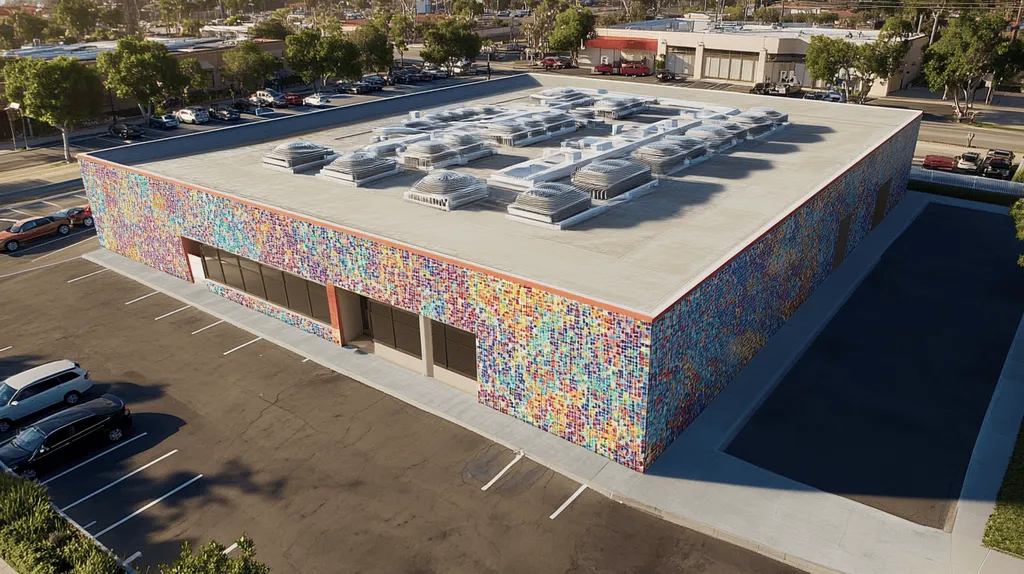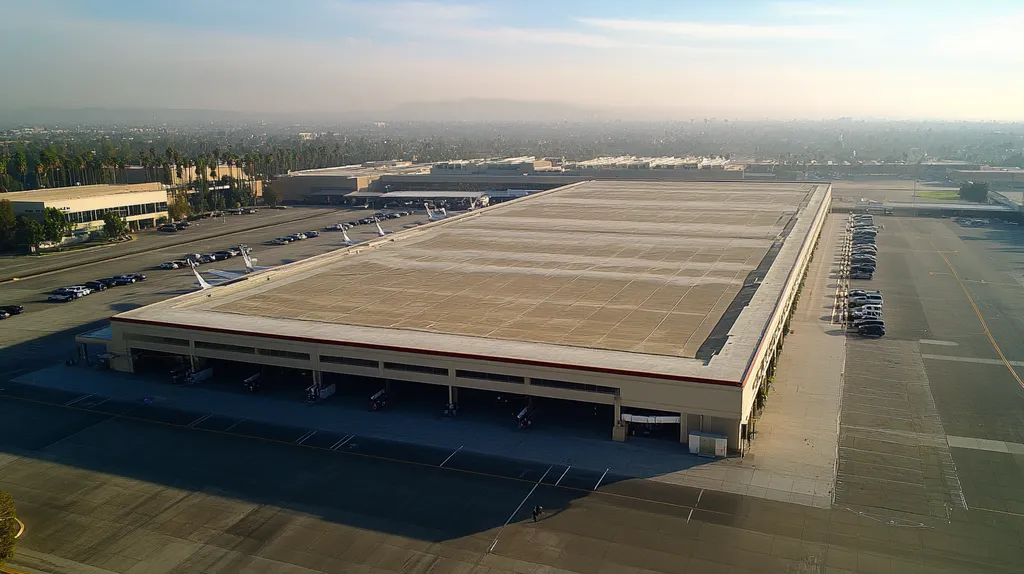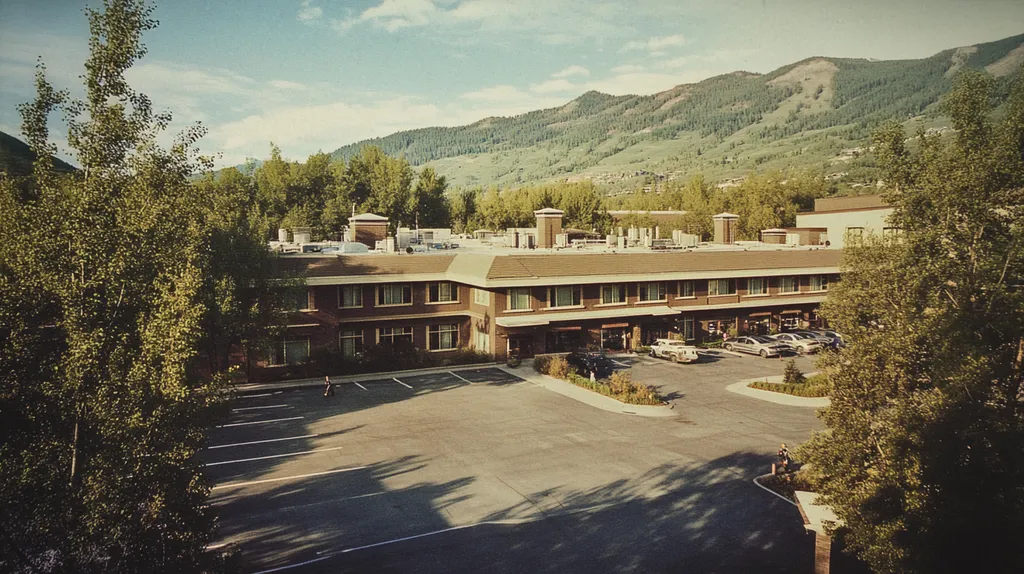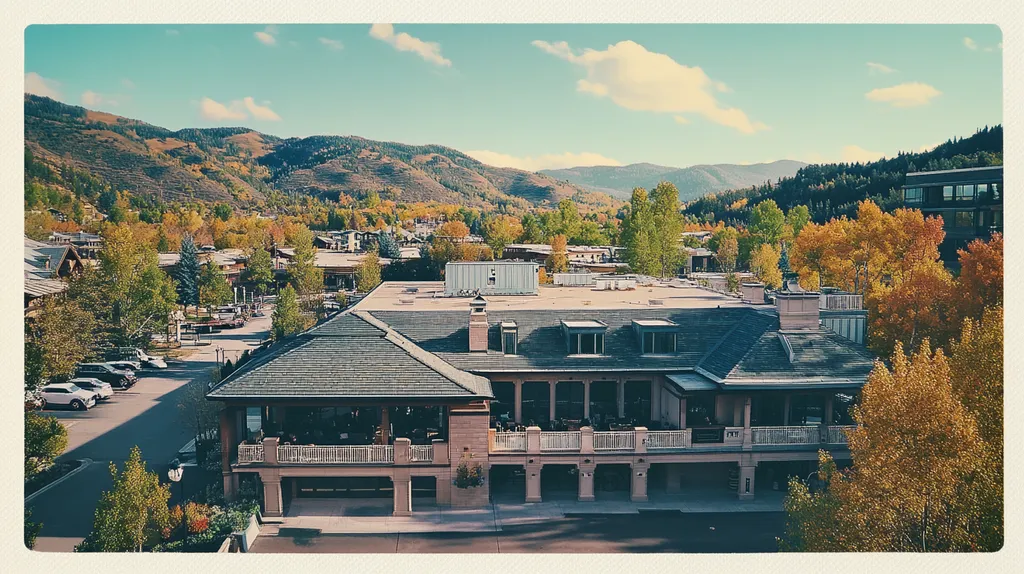Welcome to today’s Battle Royale featuring two roofing heavyweights: “Drone Surveys” in the east corner versus “Traditional Inspections” in the west!
Tonight’s showdown pits these contenders against each other across six punishing rounds designed to test every aspect of their performance for Roof Inspection Budgeting.
At stake? Millions in potential costs, decades of building protection, and the critical performance demands of modern commercial and industrial facilities.
Our professional judging panel will evaluate each round on technical merit, real-world performance, and value delivery. After all six rounds, we’ll declare our ultimate champion.
Ladies and gentlemen, facility managers and building owners… it’s time to rumble!
ROUND 1: INITIAL COSTS & INSTALLATION
In commercial roofing, inspection costs can quickly spiral out of control without proper planning. Recent industry data shows that emergency roof repairs stemming from delayed or inadequate inspections can cost businesses up to three times more than preventive maintenance programs.
Understanding the cost differences between traditional and drone inspection methods has become crucial as technology reshapes the industry. Making an informed choice between these options can significantly impact both short-term budgets and long-term maintenance costs.
Material Expenses
Traditional roof inspections require substantial physical equipment, including safety harnesses, inspection tools, and access equipment like ladders or scaffolding. These materials need regular replacement and certification, adding to ongoing costs.
Drone inspections primarily rely on the drone unit itself and its imaging equipment. While the initial drone investment may seem significant, the equipment can be used across multiple inspections without the wear and tear associated with traditional tools.
The reduced material requirements for drone inspections translate to lower ongoing costs and decreased storage needs. Most drone systems can be transported in a single case, eliminating the logistical challenges of moving heavy inspection equipment.
For material expenses, the ADVANTAGE goes to drone surveys.
Installation Complexity
Traditional inspection setups involve complex safety preparations, including anchor point verification, equipment staging, and multiple personnel coordination. These requirements often lead to extended setup times and increased labor costs.
Drone inspections require minimal setup time, typically needing only a pilot and spotter team. The primary complexity lies in ensuring proper flight conditions and maintaining line of sight with the drone.
Weather conditions affect both methods, but traditional inspections face more significant delays due to their more complex setup requirements. Drone operations can usually resume more quickly after weather delays.
For installation complexity, the ADVANTAGE goes to drone surveys.
Project Timeline
Traditional roof inspections of large commercial facilities can take several days to complete. The time-consuming nature of physical inspections often results in extended facility disruption and increased labor costs.
Drone surveys can typically complete the same inspection area in a fraction of the time. Most commercial roofs can be fully surveyed within a few hours, allowing for faster data collection and analysis.
The efficiency advantage of drones becomes even more pronounced with larger roof areas or complex structures. While traditional methods require methodical section-by-section examination, drones can capture comprehensive data in continuous sweeps.
For project timeline efficiency, the ADVANTAGE goes to drone surveys.
ROUND 1 WINNER: DRONE SURVEYS
ROUND 2: DURABILITY & LIFESPAN
Effective roof assessment strategies directly impact building longevity and maintenance costs. Without proper inspection protocols, commercial roofs can deteriorate rapidly, leading to premature failure and expensive replacements. Quality commercial roof assessments are essential for determining which roofs need replacement, rehabilitation, or ongoing monitoring.
Comparing traditional and drone inspection methods reveals significant differences in their ability to detect and prevent roofing issues. The choice between these approaches can mean the difference between proactive maintenance and reactive emergency repairs.
Assessment Accuracy
Traditional inspections rely heavily on visual examination and physical contact with roofing materials. This hands-on approach allows inspectors to detect surface irregularities and immediate problems through direct observation.
However, traditional methods often struggle with comprehensive coverage of large roof areas. Human inspectors may miss subtle signs of deterioration or have limited access to certain roof sections, potentially overlooking developing issues.
Drone surveys utilize high-resolution imaging and thermal scanning to create detailed roof condition maps. These technologies can detect moisture infiltration, insulation problems, and structural issues that might be invisible to the naked eye.
The systematic coverage and advanced sensing capabilities of drones provide more consistent and thorough assessments. For assessment accuracy, the ADVANTAGE goes to drone surveys.
Data Collection
Traditional inspection data typically consists of written reports, manual measurements, and photography from accessible areas. This documentation method can be inconsistent and heavily dependent on inspector experience.
Quality assessments must consider roof age, location, type, service history, and local climate conditions to accurately prioritize roof expenditures. Traditional methods often struggle to systematically capture and analyze these multiple factors. (source: Mantis Innovation)
Drone surveys generate comprehensive digital records including precise measurements, thermal imaging data, and 3D models. This standardized approach ensures consistent documentation across multiple inspections.
The digital nature of drone data allows for sophisticated trend analysis and early problem detection. For data collection, the ADVANTAGE goes to drone surveys.
Long-term Monitoring
Traditional inspections face challenges in maintaining consistent assessment points over time. Different inspectors may focus on different areas, making it difficult to track changes accurately.
Regular monitoring through traditional methods requires significant time investment and can be disruptive to building operations. This often leads to longer intervals between inspections, potentially missing early warning signs.
Drone surveys excel at creating reproducible inspection routes and comparison points. The ability to precisely replicate previous flight paths ensures accurate tracking of roof conditions over time.
Digital documentation makes historical comparisons more reliable and actionable. For long-term monitoring, the ADVANTAGE goes to drone surveys.
ROUND 2 WINNER: Drone Surveys
ROUND 3: PERFORMANCE FACTORS
Performance metrics in commercial roof inspections directly impact maintenance costs and building protection. Recent industry analysis shows that inadequate inspection performance can lead to missing up to 40% of early-stage roof defects, resulting in premature system failure and unexpected capital expenses.
Understanding how different inspection methods perform in key areas helps facility managers make informed decisions about their roof maintenance programs. The contrast between traditional and drone-based approaches reveals significant differences in their ability to deliver reliable, actionable results.
Speed and Efficiency
Traditional roof inspections require extensive setup time and often disrupt normal business operations. A typical 50,000 square foot commercial roof can take 2-3 days to inspect thoroughly using conventional methods.
Safety protocols and equipment positioning for traditional inspections create significant downtime. Each section of the roof must be methodically accessed and examined, leading to extended inspection periods.
Drone inspections can survey the same area in 2-3 hours with minimal disruption to facility operations. The aerial perspective allows for continuous scanning without the need for multiple setup locations.
For speed and efficiency, the ADVANTAGE goes to drone surveys.
Accuracy and Coverage
Traditional inspections rely heavily on direct visual observation and physical contact. While this allows for detailed examination of specific areas, it often results in inconsistent coverage of large roof surfaces.
Human fatigue and access limitations in traditional inspections can lead to missed defects, particularly in hard-to-reach areas. The quality of inspection can vary significantly based on inspector experience and environmental conditions.
Drone surveys maintain consistent performance across the entire roof surface. Advanced imaging systems capture uniform data quality regardless of roof size or complexity.
The systematic approach and comprehensive coverage of drone technology provide superior reliability. For accuracy and coverage, the ADVANTAGE goes to drone surveys.
Real-time Analysis
Traditional inspection methods typically require post-inspection analysis to compile findings and develop recommendations. This delay between observation and reporting can impact response times for critical issues.
The time lag in traditional reporting often means that developing problems continue to worsen while reports are being prepared. This can lead to increased repair costs and more extensive damage.
Drone inspections offer immediate data visualization and analysis capabilities. Thermal imaging and high-resolution video feeds allow for instant identification of problem areas and rapid decision-making.
For real-time analysis capabilities, the ADVANTAGE goes to drone surveys.
ROUND 3 WINNER: DRONE SURVEYS
ROUND 4: MAINTENANCE REQUIREMENTS
Maintenance requirements play a pivotal role in commercial roof longevity and performance. Industry data shows that poor maintenance practices lead to premature roof failure in 80% of cases, with repair costs often exceeding initial installation expenses by substantial margins.
Understanding the maintenance implications of different inspection methods has become crucial as technology reshapes traditional approaches. The choice between traditional and drone-based inspection methods can significantly impact long-term maintenance effectiveness and costs.
Equipment Upkeep
Traditional inspection equipment requires regular maintenance, certification, and replacement. Safety gear, measurement tools, and access equipment need constant monitoring and updates to meet safety standards.
Storage and maintenance of traditional inspection equipment demand dedicated space and staff resources. These ongoing requirements add significant overhead to inspection programs.
Drone systems require minimal maintenance beyond battery management and software updates. The compact nature of drone equipment reduces storage needs and simplifies maintenance protocols.
For equipment upkeep requirements, the ADVANTAGE goes to drone surveys.
Operational Consistency
Quality assessments must account for roof conditions, service history, and environmental factors to effectively prioritize maintenance expenditures. Traditional methods often struggle with maintaining consistent evaluation standards across multiple inspections.
Weather conditions and access limitations frequently disrupt traditional inspection schedules. This inconsistency can lead to delayed maintenance and missed early warning signs.
Drone operations maintain standardized inspection protocols regardless of roof conditions. Advanced imaging systems ensure consistent data quality across multiple surveys.
For operational consistency, the ADVANTAGE goes to drone surveys.
Documentation Management
Traditional inspection documentation requires extensive manual organization and storage. Paper reports, photographs, and maintenance records often become scattered or lost over time.
Tracking maintenance history and comparing inspection results becomes challenging with traditional methods. The lack of standardized documentation can lead to overlooked maintenance needs.
Drone surveys generate digital records that integrate seamlessly with maintenance management systems. Automated documentation ensures complete maintenance histories remain accessible and analyzable.
For documentation management, the ADVANTAGE goes to drone surveys.
ROUND 4 WINNER: DRONE SURVEYS
ROUND 5: SUSTAINABILITY CREDENTIALS
Environmental impact has become a critical factor in commercial roofing decisions, with building operations accounting for nearly 40% of global energy consumption. Inspection methods significantly influence a facility’s carbon footprint through equipment usage, resource consumption, and operational efficiency.
The environmental implications of different inspection approaches extend beyond immediate energy use to impact long-term sustainability goals and regulatory compliance. Understanding these factors helps facility managers make environmentally responsible choices while maintaining roof integrity.
Carbon Footprint Assessment
Traditional inspection methods rely heavily on fossil fuel-powered equipment, including lifts, generators, and transportation vehicles. These operations generate significant carbon emissions through extended equipment use and multiple site visits.
The manual nature of traditional inspections often requires repeated trips to complete comprehensive assessments. This multiplies transportation emissions and extends the duration of energy-intensive operations.
Drone inspections operate primarily on rechargeable batteries, dramatically reducing direct carbon emissions. A single flight can cover extensive roof areas without the need for powered access equipment or multiple visits.
The minimal energy requirements and efficient coverage patterns of drone technology make them significantly more environmentally friendly. For carbon footprint reduction, the ADVANTAGE goes to drone surveys.
Resource Optimization
Traditional inspection methods consume substantial physical resources, from safety equipment to documentation materials. The wear and tear on equipment often leads to frequent replacements, contributing to material waste.
Manual inspections typically require multiple team members and support equipment, increasing resource consumption through transportation and operational needs. This approach creates unnecessary waste through redundant processes and equipment.
Drone inspections minimize resource usage through digital documentation and efficient operations. The technology requires minimal physical materials and can operate with smaller inspection teams.
For resource efficiency and waste reduction, the ADVANTAGE goes to drone surveys.
Environmental Impact Monitoring
Traditional inspections often struggle to provide comprehensive environmental impact data. Their limited scope makes it difficult to track energy efficiency patterns or identify opportunities for sustainability improvements.
Manual assessments typically focus on immediate structural concerns rather than long-term environmental considerations. This narrow focus can miss crucial opportunities for improving building energy performance.
Drone surveys excel at collecting detailed environmental data through thermal imaging and advanced sensors. This technology can identify heat loss, moisture penetration, and other factors affecting building energy efficiency.
For environmental impact monitoring capabilities, the ADVANTAGE goes to drone surveys.
ROUND 5 WINNER: DRONE SURVEYS
ROUND 6: SPECIALIZED APPLICATIONS
Specialized commercial roofing applications present unique inspection challenges that directly impact maintenance budgets and building safety. Industry data reveals that 35% of commercial roof failures occur in areas requiring specialized inspection approaches, such as solar installations, green roof systems, and complex HVAC configurations.
Understanding how different inspection methods perform in these demanding scenarios has become crucial as building systems grow more complex. The distinction between traditional and drone-based approaches becomes particularly significant when evaluating specialized roofing features.
Complex System Integration
Modern commercial roofs increasingly incorporate sophisticated systems including solar arrays, green roof installations, and advanced mechanical equipment. These integrated components require detailed inspection protocols that can assess both the roofing system and its interaction with installed technologies.
Traditional inspections face significant challenges when evaluating complex integrated systems. Physical access limitations and safety considerations often prevent thorough examination of areas around and beneath installed equipment.
Drone surveys excel at capturing comprehensive data from multiple angles around complex installations. Advanced imaging capabilities allow for detailed assessment of system integration points without disturbing sensitive equipment.
For complex system integration, the ADVANTAGE goes to drone surveys.
High-Risk Areas
Commercial roofs contain numerous high-risk areas where detailed inspection is crucial but physical access may be dangerous or impractical. These zones include edges, penetrations, and areas around mechanical equipment where most leaks originate.
Traditional inspection methods expose workers to significant safety risks when accessing these areas. The physical dangers often lead to abbreviated or incomplete inspections of critical zones.
Drone technology enables thorough examination of high-risk areas without putting personnel in danger. High-resolution imaging and thermal scanning provide detailed data from safe distances.
For high-risk area assessment, the ADVANTAGE goes to drone surveys.
Specialized Material Assessment
Modern commercial roofing systems utilize diverse materials requiring specific inspection protocols. From reflective coatings to vegetative surfaces, each material type demands unique evaluation methods.
Traditional inspections rely heavily on visual assessment and physical contact, which may not adequately capture the condition of specialized materials. This limitation can lead to missed early warning signs of material degradation.
Drone surveys employ multispectral imaging to evaluate different material types simultaneously. This technology enables precise assessment of material conditions across various roofing system components.
For specialized material assessment, the ADVANTAGE goes to drone surveys.
ROUND 6 WINNER: DRONE SURVEYS
AND THE WINNER IS…
After six punishing rounds of technical evaluation, we have our verdict, and it’s a KNOCKOUT victory!
In a display of technological dominance that would make Rocky Balboa proud, DRONE SURVEYS have emerged as our undisputed champion, claiming victory in all six rounds of competition!
The champion’s superior performance shined through with devastating efficiency in cost control, unmatched accuracy in assessment capabilities, and a technical knockout in maintenance protocols. Its ability to deliver comprehensive data while minimizing disruption proved unstoppable in the modern roofing arena.
Yet don’t count Traditional Inspections out completely – this seasoned veteran still holds its own in scenarios requiring hands-on material testing or when drone operations face regulatory restrictions in sensitive areas.
IMPORTANT NOTICE: Every facility brings unique challenges to the ring. Building height, location, local regulations, and specific property characteristics all influence inspection strategy effectiveness. This analysis provides general guidance but cannot account for all variables. Always consult qualified roofing professionals who can evaluate your specific situation before making inspection decisions.
Ladies and gentlemen, in the high-stakes world of commercial roofing, victory goes not just to the technically superior contender, but to those who strategically match their facility’s specific needs with the right inspection approach. Choose your champion wisely!
FREQUENTLY ASKED QUESTIONS
Q. What are the initial costs of a commercial roof inspection?
A. Initial costs for traditional inspections can be significant due to equipment and safety requirements. These expenses often escalate when emergency repairs arise from inadequate inspections. Recognizing the advantages and costs of drone inspections can help you manage these expenses.
Q. How do traditional and drone inspections compare in commercial roof durability?
A. Drone inspections generally provide better data for detecting issues that affect roof durability. They use advanced imaging techniques to identify potential structural problems early on, allowing for proactive maintenance, unlike traditional methods that focus on visual inspections.
Q. Which method offers better performance for detecting issues in industrial roofs?
A. Drones enhance performance by providing comprehensive coverage and consistency. They minimize the risk of missing defects, enabling effective early detection of issues that could lead to significant roof failures, while traditional methods may overlook critical areas.
Q. What are the maintenance requirements for commercial roof inspections?
A. Traditional inspection methods demand ongoing maintenance of physical equipment, adding to costs and complexity. In contrast, drones require minimal upkeep, mainly focusing on software and battery management, thus optimizing your inspection process.
Q. How do sustainability credentials vary between inspection methods?
A. Drone inspections are more sustainable, utilizing rechargeable batteries and reducing carbon emissions significantly. They require fewer physical resources compared to traditional methods that rely on fossil fuel-powered equipment, making them the eco-friendlier choice.
Q. Are drone inspections safe for high-risk areas in commercial roofs?
A. Yes, drones provide a safer option for inspecting high-risk areas. They can capture detailed images and data without needing personnel to access dangerous zones, thereby significantly reducing the risk of accidents during inspections.
Q. What technology do drone surveys use for commercial roof inspections?
A. Drone surveys utilize advanced technologies such as thermal imaging and high-resolution cameras to assess roof conditions. These capabilities allow for detailed analysis and quicker identification of potential issues compared to traditional inspection methods.











